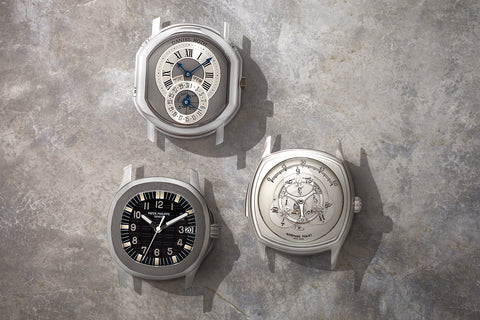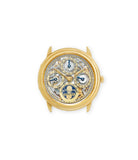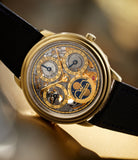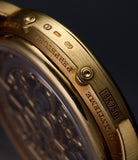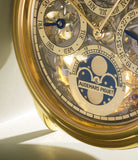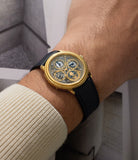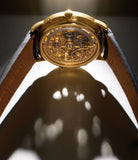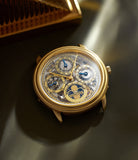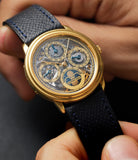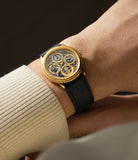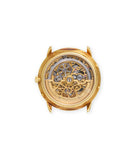This is a thoroughly skeletonised and open-work variation of the original Audemars Piguet Quantième Perpétuel. The reference 25558/002BA*, with a 36mm yellow gold case, showcases the intricate inner workings of one of the most hallowed complications in watchmaking. It is powered by the self-winding calibre 2120, which isn’t just skeletonised but lavishly hand engraved. It is understood that only 154 examples of this reference were produced in yellow gold.
Leap Forwards of Perpetual Calendar
The first perpetual calendar pocket watch was invented by Thomas Mudge in 1762, yet it wouldn’t be until 1925 when Patek Philippe produced the first perpetual calendar wristwatch. That’s how hard it is to miniaturise this complication, just so that its wearer isn’t thrown out of sync for a moment every four years.




Certainly, the complexity of this complication isn’t just about scale. It’s about energy. If a chronograph requires a lot of energy just to move those three extra hands, now imagine the energy demands of a watch whose entire mechanism needs to be constantly running, even while it appears to be doing not much at all. This requires minimal friction, minimal weight and whatever else can be done to conserve energy.
All of which begs the question, if perpetual calendars can not only be challenging to make, but even to own, what quite is their appeal? Michael Friedman, who holds the fantastic title of ‘head of complications’ at Audemars Piguet – makers of rods for its own back, and hence the RD2, the world’s thinnest self-winding perpetual calendar watch – gets philosophical on this question. If, he says, watches are so often celebrated for their precision in the moment, for their nowness, for splitting seconds, the perpetual calendar celebrates slow time. Indeed, the very name says it all: the perpetual calendar might as well be called the forever watch.


PERPETUAL Calendar Watches at A Collected Man
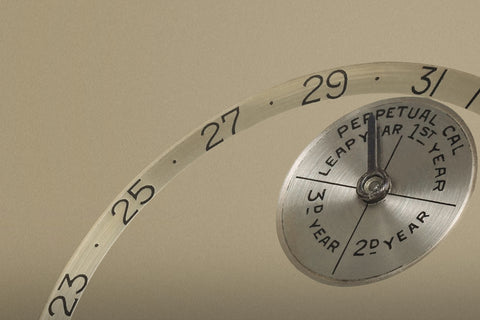
The Leap Forwards of Perpetual Calendars
By Josh Sims
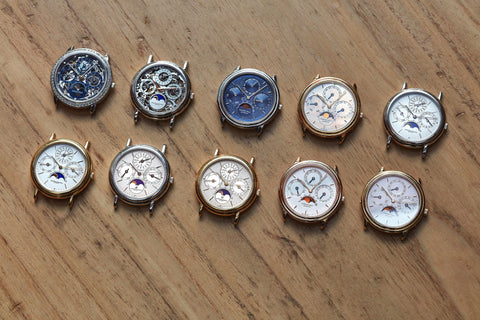
The Birth of Ultra-Thin, Automatic Perpetual Calendars
By Russell Sheldrake
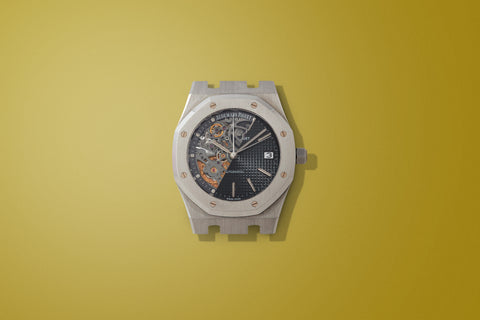
The Bare Bones Of the Skeletonised Watch
By Josh Sims
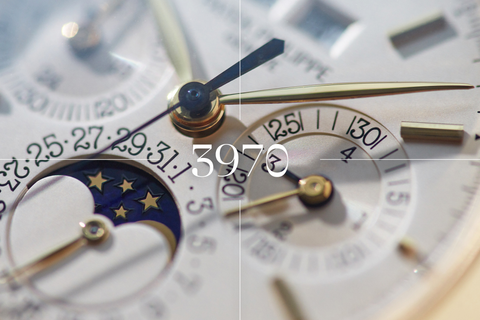
A Collector's Guide: The Patek Philippe 3970
By Russell Sheldrake
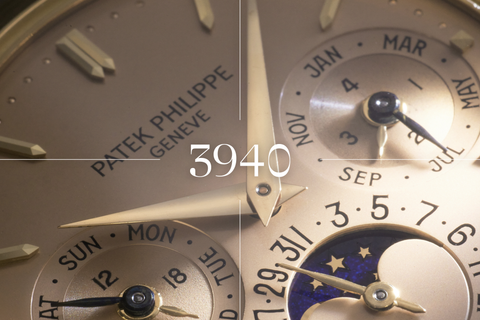
A Collector's Guide: The Patek Philippe 3940
By Russell Sheldrake
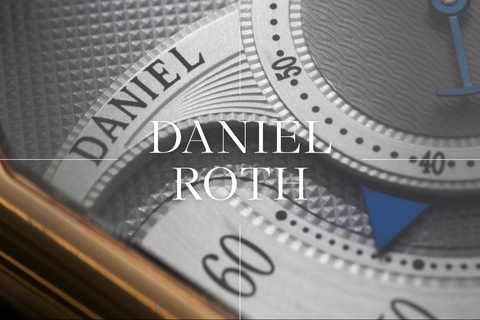
A Collector’s Guide: Early Daniel Roth
By Russell Sheldrake
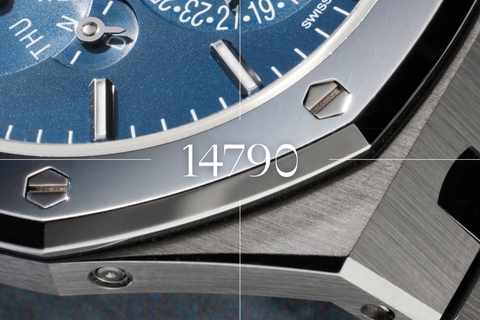
A Collector’s Guide: The Audemars Piguet Royal Oak ref. 14790
By Russell Sheldrake
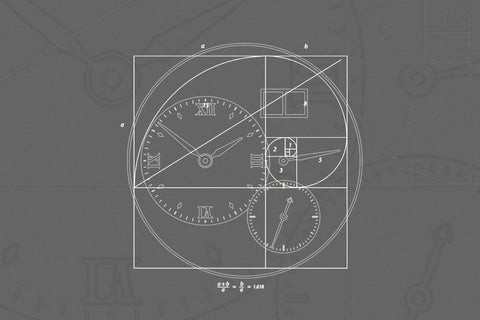
The Balance of Symmetry and Asymmetry in Dial Design
By Felix Scholz
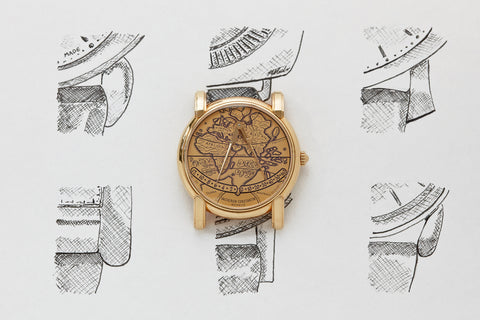
Six Collectors Choose their Favourite Lugs
By Russell Sheldrake
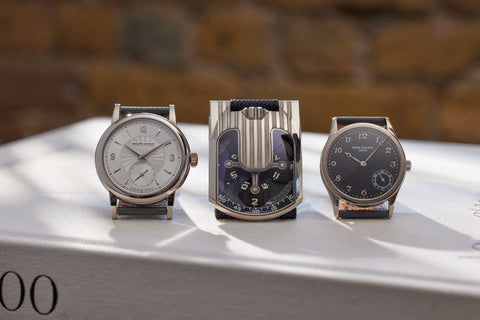
What Is Independent Watchmaking?
By A Collected Man
